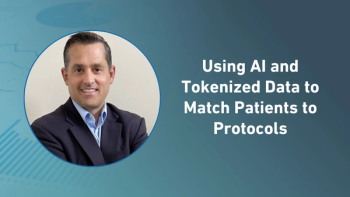
How Risk Based Monitoring is Changing Organizational Landscape
RBM is an emerging area which gives endless opportunities to explore, transform, and evolve.
Once I heard of Risk Based Monitoring I became keen on stepping into the area right away. At a glance, it seemed to combine everything I liked: analytics, technology, risk management and communication. Even then I did not completely realize what it actually was until got chance to join Risk Based Monitoring group and participate in defining the strategy.
Initially, I was pre-occupied with daily discoveries, re-thinking and even reshaping current processes and approaches. With the fresh prospective it is always easier to see the challenges and opportunities which brought me the idea of share it with the broader community through this article.
First of all, RBM is an emerging area which gives endless opportunities to explore, transform, and evolve. The uniqueness of this areas makes almost any areas of contribution relevant, whether it is statistical analysis, communication, change, quality, or risk management.
Other interesting fact is the depth of interconnections. While some analytical functions can comfortably exist in silos and perfectly fulfil the purpose, RBM is very different. It is like a perfect marriage of communication and analytics when one part cannot exist without the significant other. Analytics magically connects with compliance, trials design, data quality, communication, and change management, which is the most valuable and least explored component. This point segues us to the next point of the positioning RBM within the organization.
The most common placement is within the data management or clinical trial operations. Some companies bury it under the umbrella of traditional remote monitoring or analytical groups which is probably the worst possible choice. Latest trend shifted towards aligning risk based monitoring with the quality or risk management function. So why is it so? The root causes come from better understanding of what risk based monitoring actually is.
Originally RBM was established by FDA to ensure proper monitoring. As the approach kept evolving, it emerged into the methodology. And “methodology” prospective is crucial to understanding of its true value to the organization as well as surrounding confusions. Think of the project management by PMI which is a methodology as well as function. It consists of multiple pillars, can be applied to different projects and includes various phases. You can utilize it in build a ship, install application or even developing training. By analogy, RBM can be applied to various subject areas of the clinical trials. Full cycle of the methodology should also include multiple pillars to expand the benefit: risk definitions, actual monitoring, assessment and feedback analysis, improvements, impacts, and adjustments (picture 1).
Picture 1. RBM values and organizational effectiveness.
As an actual methodology, risk based monitoring, can be applied to different functions without fear of overlapping, but rather reinforcing the gaps. It should be part of management strategy to decide what areas would use it. No need to limit yourself to just protocol compliance or subject safety, there are much more: site performance, CRA visits, performance, data transfer quality, drug accountability, initiation timelines etc. The highest value of this function would be in the ability to drive continues operational improvements and prevention of the defects in addition to reducing day-to-day workload.
Couple more operational challenges to consider while defining the RBM strategy:
- Balancing between process standardization and customization for risk indicators, review frequency, change mechanism.
- Inspections and audit approach. You can be challenged beyond the regular due to novelty of the process.
And last but not the least is the quality. Risk based monitoring is not just managing risks but also the tool for continues improvement and quality management. When implementing and tracing a cost of quality within a company, management typically focuses on failure costs. They study costs due to defects and not the cost to prevent the defects, which is more important. That is also one of the reasons why it is so hard to create accurate metrics to measure benefits of risk based monitoring as one cannot measure something that did not happen. At the same time this is the strong foundation for building continues improvement and the long term benefit leveraged by RBM to an organization.
In the conclusion, I would like to reiterate that latest edition of ICH6R2 is focusing on the data driven decisions which is in line with the current expansion of data science into overseeing and conducting clinical trials. RBM methodology allows you to prioritize important areas (Risks and Weights), make data driven decisions (Analytics) and act accordingly (Communication). The question of overlapping with other functions like data cleaning or medical monitoring is not relevant anymore. Almost everything we look at is already covered by other functions in some capacity. But RBM is the true business intelligence of the clinical trials. It is about how we truly conduct and refine.
Vera Pomerantseva, Sr. Central Monitoring Lead, Bristol-Myers Squibb
Newsletter
Stay current in clinical research with Applied Clinical Trials, providing expert insights, regulatory updates, and practical strategies for successful clinical trial design and execution.






.png)



.png)



.png)
.png)
